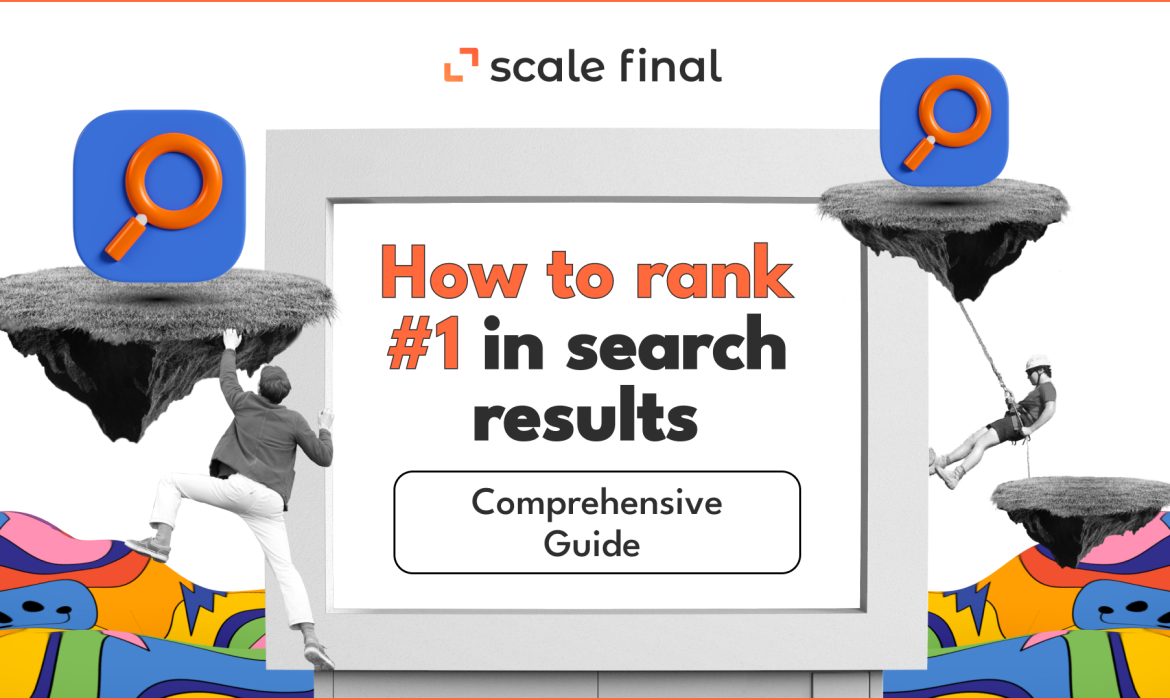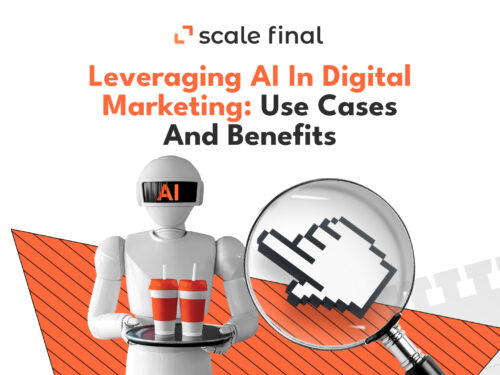Home • Blog • How to rank #1 in search results: a сomprehensive guide
How to rank #1 in search results: a сomprehensive guide
The position of a website in search results has a great impact on the number of leads. The higher up the page is, the more potential customers will see and visit it. Therefore, more will also buy the product.
In a previous post, we presented examples of website promotion opportunities, such as paid search ads.
Read the full post: Drive Traffic to Your Landing Pages like a Boss
This text is about website promotion through SEO.
There are 2 ways to bring the site to the top of search results:
- Paid advertising – buy ads on Google that are placed on the first 2-4 search positions and get your traffic.
- SEO optimization – search robots will lift your site to the top.
Google doesn’t give an exact answer about what can influence the position in search results. Search engines often change their algorithms.
The robots evaluate a variety of factors. Some have more influence than others. With over seven years of experience in SEO, our ScaleFinal team has a lot of experience with how search algorithms work.
The most important factors are considered:
- Content
- Behavior
- Commercial
- Technical
- External linking
Content factors
Keywords and LSI words
Not only users but also search robots read the texts on your website. The algorithms evaluate how the text matches the user’s search query. The more it matches, the higher the page is in the search results.
If the text has few keywords, the robot will consider your page as not relevant. You’ll not rank high.
Too many keywords are also bad. Robots may classify the article as spam.
Rule 1: Publish useful and quality content for your target audience. Insert keywords organically into your content.
Rule 2: About content. To help robots understand the content, add LSI (Latent Semantic Indexing) words to your keywords. That are terms that are related to the keywords.
For example, LSI words for “pancake”:

Irrelevant content
You can’t just create a website, write SEO text and leave it. It should be optimized regularly, or you’ll lose your top search positions.
1. Blank text isn’t an option, either. Add images, videos, and so on.
Read more about the importance of different types of content: Neuromarketing is gold?
2. Update the information if it’s outdated.
If the site is already at the top, then your users already find the content useful. That’s why you shouldn’t touch the old content but add new ones.
Advertising on the site
It’s in the best interest of search engines to provide users with a pleasant user experience. Therefore, everything that can be unpleasant for the user is taken into account.
Full screen pop-up banners and advertisements spoil the experience. As a result, the user doesn’t stay and leaves.
There are some pop-up exceptions:
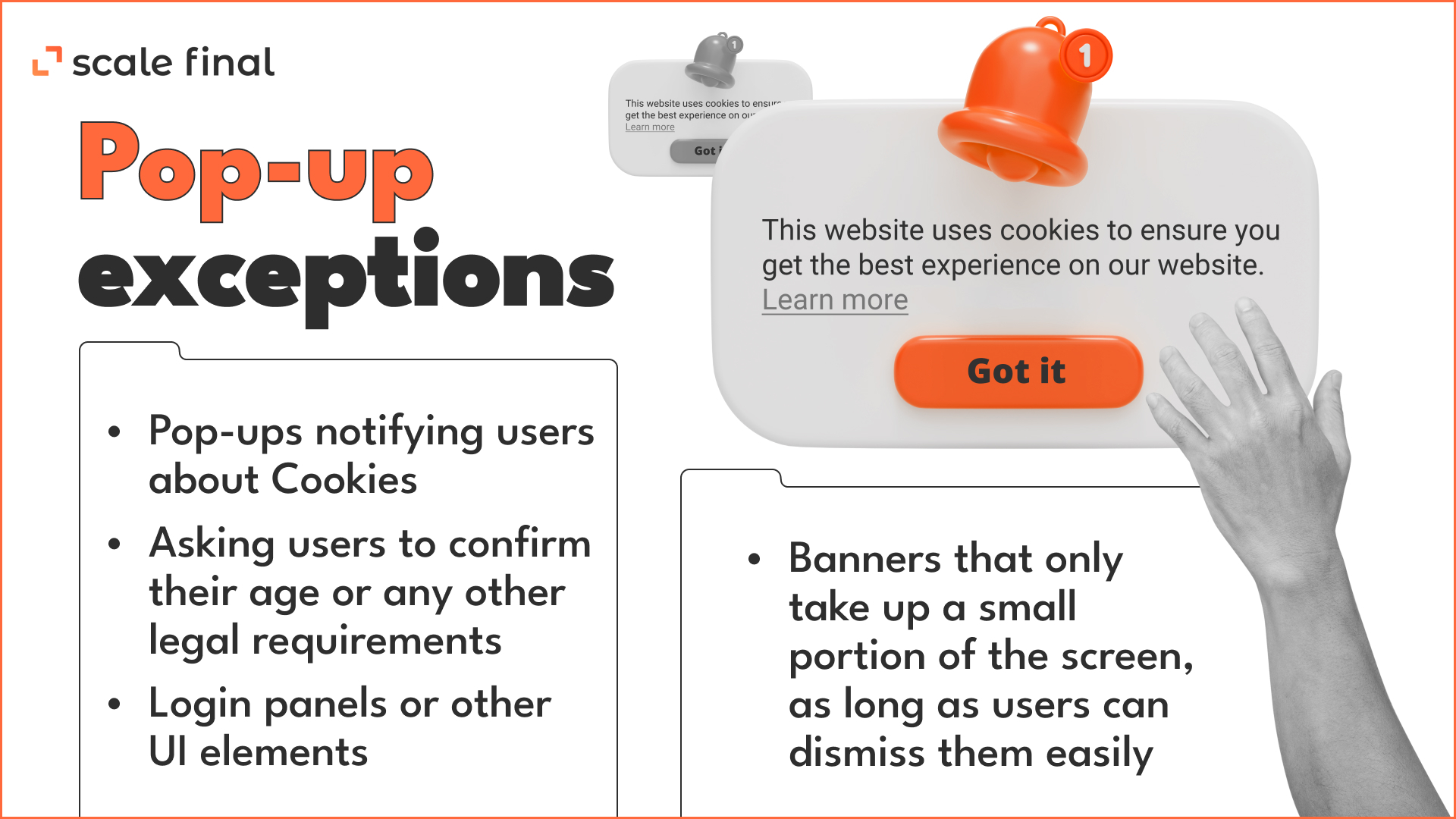
Behavioral factors
If a user has opened your site, browsed it and then returns to search, this is a “bounce“. For search engine algorithms, this means that there is no relevant information on the page.
If the bounce rate is high, the site goes down in the search results.
On the other hand, the user may find the info and go to another site to compare prices. Therefore, “click-through” and “scroll depth” are considered in addition to bounce rates.
Click-through length is the time the user spends on the website after clicking through from the search.
Scroll depth is how deep the user went into your page. For example, clicks can count to different sections of your site: “Catalog”, “Services”, “about us”. The exception is one-page sites. Search robot understands that your site has only one page, so this factor isn’t taken into account by the system.
In general, the more and deeper the interaction with the site, the better. This is a signal for the search engine robots that the content is interesting, so they’ll rank your site higher.
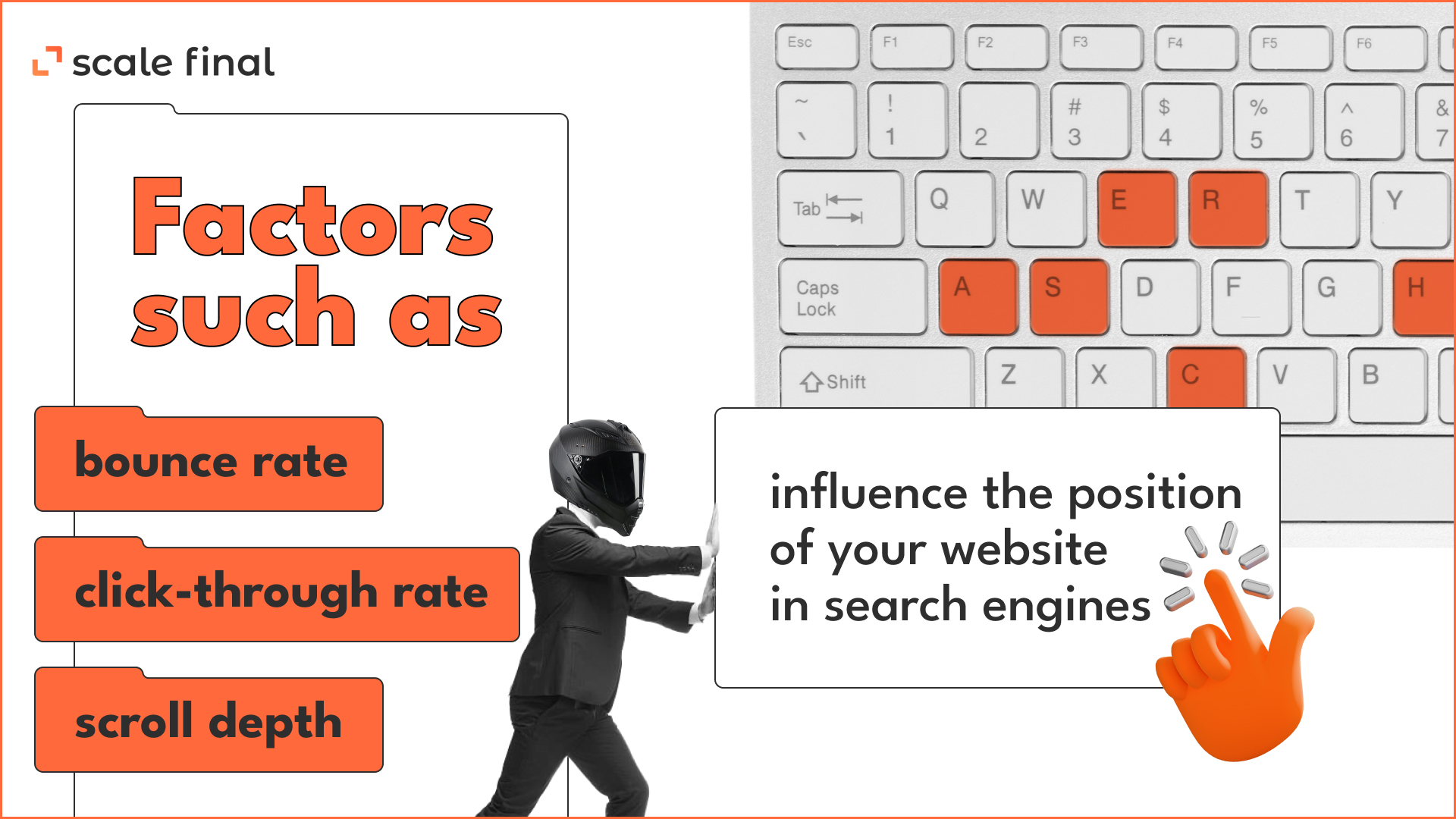
If the user went to the site and didn’t come back, it’s not a horror story, it’s a happy ending. It means that users found what they needed. In other words, made the “final click”. This kind of thing that search engines encourage.
Technical factors
Device adaptation
About 65% of the world’s Internet surfing is on mobile devices. That is why search engines also bring up sites that are easy to sit on from both PCs and phones.
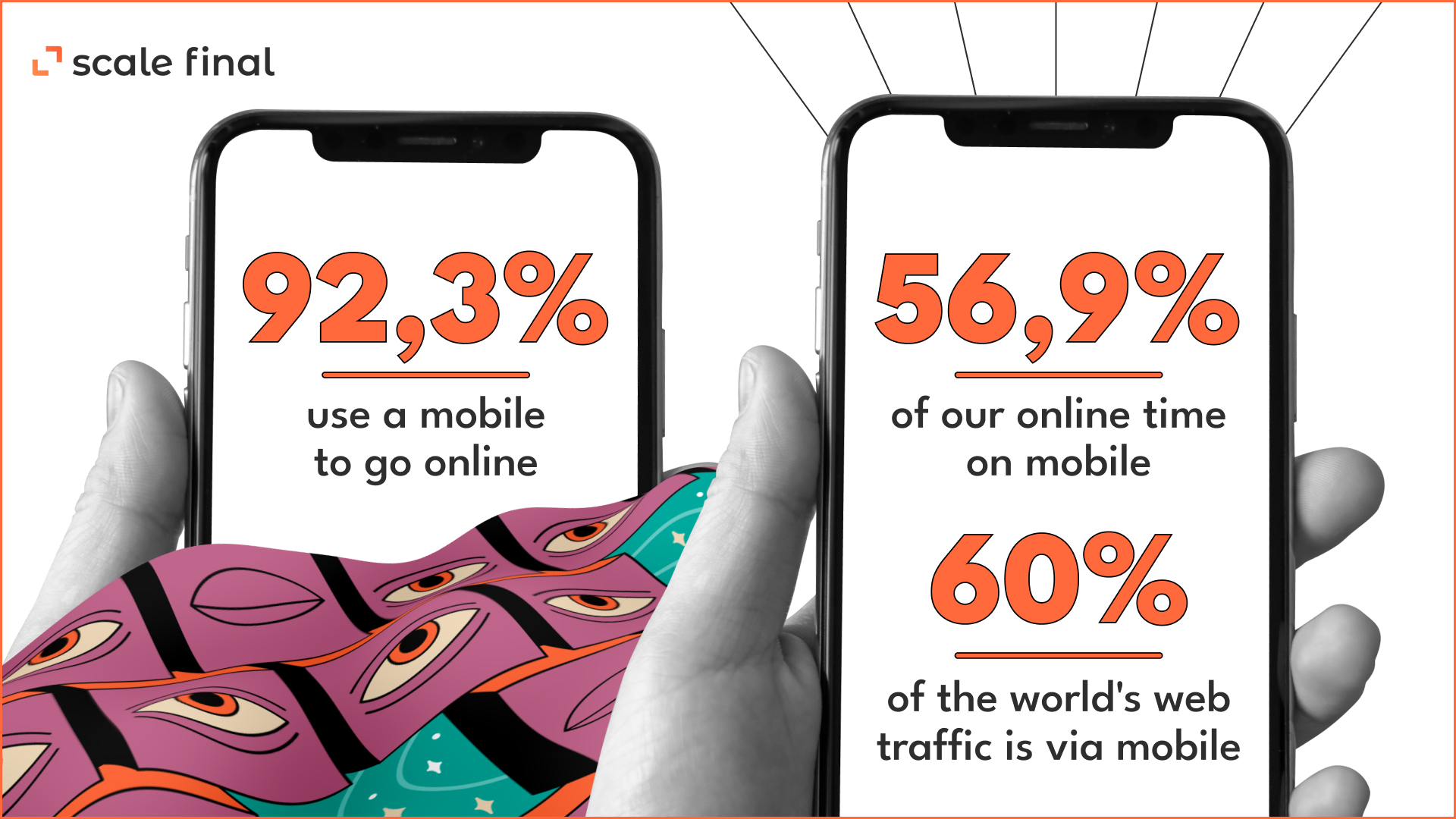
Search engines don’t like websites without a mobile version. The desktop version of the website is extremely inconvenient to use on mobile. The user will close the page and go to another page, which will lead to a bounce.
Website Load Speed and Clean Code
The ranking is influenced by the Time To First Byte. TTFB is the time between the browser requesting a page and when it receives the first byte of information from the server. Only TTFB is considered by search engines.
The loading speed of the website after the first byte has no direct influence on the algorithms. But it has an indirect effect.
Slow loading speed annoys everyone.
Clean code and the absence of large CSS and JS blocks are also noticed by robots. A clean code speeds up the loading speed of the website.
Clean code can improve search engines’ understanding of a website’s content.
SSL certificate
Secure Socket Layer (SSL) is a certificate that allows a website to switch from HTTP to HTTPS, which is more secure.

Google is protecting users, so suspicious and unsafe websites are downgraded in search.
Domain age
The longer it exists, the more trustworthy it is.
New sites are checked for reliability and technical correctness. On average, this takes a few weeks to two months.
A high volume of visitors, regardless of where they come from, can cause the site to get out of the testing phase faster.
Also, buying an old domain is no guarantee that you’ll make it to the top.
For example, the old domain may have a bad history, or the new site may not match that of the old one.
In this case, the algorithms don’t take into account the age of the domain. It will be checked like a newly created site.
Commercial Factors
Prices on the site
Search engines love sites with prices. The user expects complete information about the product: from its features to its price.
Sites that don’t include a price appear questionable to users and trust in them is lower.
There are situations when you can’t provide a price or integrate an online calculator. In that case, competitors most likely don’t have a price tag either. Then this factor has almost no impact on the ranking.
But if there is a possibility to provide a price, that’s an advantage.
Contact information
It would be good if you leave personal information like phone number, social media or address.
There is such a thing as E-A-T (Expertise, Authority, Trust).

E-A-T by itself doesn’t affect the ranking, but the search engine requires the presence of contacts on the website that confirm the physical existence of the company.
This has a direct impact on how consumers perceive your business.
CTA “Buy” buttons
They should be large, in a prominent place, near any product.
If you sell services or virtual products with different rates, the “Buy” button should be next to each rate.
More on the importance of CTAs: CRO From Scratch. Part 3.
External linking
When evaluating a site’s quality, search engines consider the number and quality of links.
As for the number, it’s clear. The links placed on different sites generate traffic to your site.
The following criteria judge the quality of links:
- The relevance of the links – links from sites that are relevant to your site are rated more highly than irrelevant ones.
- Credibility of sites – if links come from sites that already have a high search engine ranking, it can improve the ranking of your site.
Conversely, sites with low ranking have a negative effect.
How to boost your ranking:

This not only impacts search engine results but also helps attract target customers to the site.
Author
-
 CEO of ScaleFinal
CEO of ScaleFinalI'm CEO of Scale Final and an experienced SEO specialist obsessed with trackable results and process optimization. My personal motto is "Get more by spending less". My interests and hobbies include: Yoga, tea culture, skateboarding, board games, Mafia social game, arthouse cinema, off-road cycling, psychology, Zen Buddhism and meditation.
View all posts

